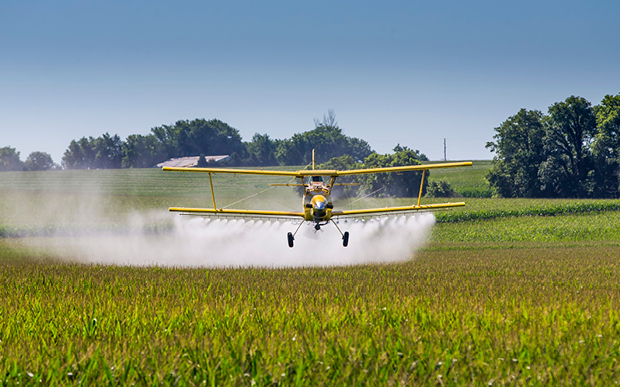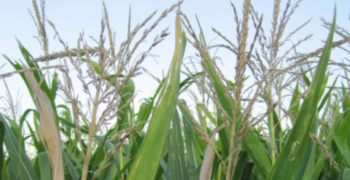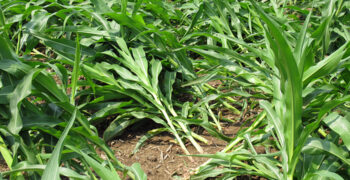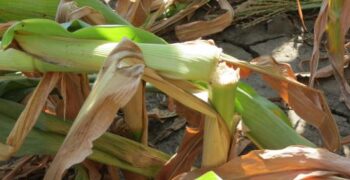 Will I still benefit from a fungicide application in a dry year?
Will I still benefit from a fungicide application in a dry year?
By Champion Seed Agronomist, Brandon Hulme
Managing foliar diseases in corn and soybeans is not a new challenge for farmers. The tools we have available to us, however, are new. Today’s chemical products are not the same as they were 10 or 15 years ago. Multiple modes of action in one fungicide application give many layers of protection.
Key benefits of a timely fungicide application include:
- Preventing fungal diseases from infecting the plant
- Curing fungal pathogens that have already infected the leaves
- Aiding in overall plant health
- Increasing late-season standability
- Mitigating the effect of stress on the plants are all key benefits to a timely fungicide application.
When to apply fungicide
Fungicides bring the greatest return on investment (ROI) with a timely application to the corn or soybean crop when disease pressure is moderate to severe. We find that fungicides still have a positive ROI even in relatively low disease-pressure years, or when hot and dry conditions reduce yield and fungal disease growth is minimal.
An ounce of prevention is worth a pound of cure. Preventing diseases from ever taking hold within the crop canopy brings the greatest level of yield loss prevention. Waiting to spray until disease has been confirmed in the field is too late, and yield has already declined.
Fungicides will stop the disease where it is and prevent it from spreading. This becomes critical in hard-to-catch diseases. Tar spot, for instance, can infect a corn plant up to two weeks before the first visual symptom is seen.
Healthy plants are better able to withstand adverse conditions than stressed or sick plants. This is another example of how a fungicide application can benefit the crop and overall yield even in low disease pressure years.
Benefits of a fungicide application include:
- Improved nutrient movement through the plant
- Improved tissue regeneration
- Regulated water use in dry conditions
- Increased light absorption because fungicides keep plants greener, which increases photosynthesizing
- Lowered transpiration rates, meaning less water evaporates from the leaves, so the plant needs to pull less water from the already dry soil
Improving resiliency with fungicide application
Fungicide application also improves resiliency, particularly when it comes to common late-season stressors. Tears in leaves from late-season hailstorms or windstorms give fungal pathogens the perfect opening to get into plants and spread. But plants that have been sprayed will have faster tissue regeneration and prevent these fungal diseases from taking hold, in addition to having stronger stalks to withstand persistent winds.
As we have noted time and time again, corn fields that receive a fungicide application have improved late-season standability. After the corn plant tassels and completes pollination, its number one priority is to feed the ear with all available nutrients. In the case of low nutrient availability, corn plants can mobilize key nutrients from the stalk to the ear to complete grain fill.
After physiological maturity or black layer, that passageway to supply nutrients to the ear is shut off. If plants start to shut down at the same time as black layer, the stalk is deprived of nutrients, which compromises standability and can potentially cause late-season stalk lodging.
On the other hand, a green, healthy plant that is free of disease and other stressors at black layer will continue to uptake nutrients. With the grain fill period complete, nutrients can go to other parts of the plant, including the lower stalk. This improves the late-season stalk strength and standability.
See the difference yourself
The days of single-mode-of-action fungicides and the “see and spray” mentality of waiting for disease to be present before applying fungicides seem to be going by the wayside. As three mode-of-action fungicides dominate the market, they bring with them not only superior disease protection but increased plant health, performance and yield.
Run trials on your own farm, leaving untreated check strips to compare the parts of the field treated with fungicide. See for yourself what the benefit of fungicide can do for your operation even when disease pressure seems to be low.
Contact the Champion Seed agronomy team for more information.
 Will I still benefit from a fungicide application in a dry year?
Will I still benefit from a fungicide application in a dry year?

